Too Many White Girls
With the discussion about Liar, I decided to do a very unscientific, informal roundup of who’s on the 2009 crop of book covers. I looked at about 775 children’s and YA book covers for books that have been released or will be released this year. 80% of them had people on them. A full 25% of all book covers had white girls pictured on them, and 10% had white boys. Only 2% of the titles I looked at had African American boys or girls pictured on the covers – a sad state of affairs. I can understand the outcry over the Liar cover.
With the caveat that I cannot possibly have seen everything that’s out there, and that for the most part, I have not included series books – here’s some of what I found:

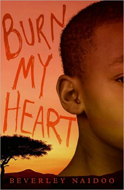

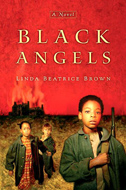
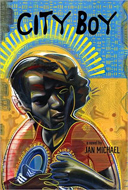

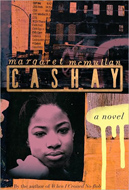


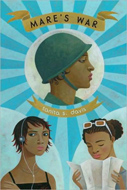

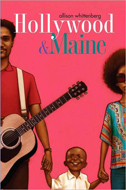
There are lots of series specifically targeting African American teens, like Kimani Tru, and Bluford High, and they all have black teens on their covers. And most titles with 3 or more people on them are likely to include an African American in the group. But the dearth of black people on the year’s mainstream book covers is pretty appalling.
Side notes: I would have included Flygirl by Sherri L. Smith, but much like Liar, you really can’t say that the subject is African American. Having read the book, it is in keeping with the story – an important aspect is that the main character passes for white.
Also, there were a good number of new books that included “African American” in the LOC marc record, which fell into the no people on the cover category – Unsigned Hype by Mattison Booker, Morning in a Different Place by Mary McGuigan, Dope Sick by Walter Dean Myers, If I Grow Up by Todd Strasser – to name a few.
Rock and the River by Kekla Magoon (Aladdin): In 1968 Chicago, fourteen-year-old Sam Childs is caught in a conflict between his father’s nonviolent approach to seeking civil rights for African Americans and his older brother, who has joined the Black Panther Party.
Burn My Heart by Beverley Naidoo (Amistad): While the Mau Mau rebellion threatens the British settlers living in Kenya during the 1950s, Mathew and Mugo maintain their friendship, despite their different races, but during these tense times, a single act of betrayal could alter everything.
Messed Up by Janet Nichols Lynch (Holiday House): Fifteen-year-old RD is repeating the eighth grade, planning to have an easy year, but after his grandmother walks out her boyfriend is no longer able to care for him, which leaves RD to fend for himself while avoiding being caught. (LOC Subject: “Hispanic Americans”)
Black Angels by Linda Beatrice Brown (G. P. Putnam’s): Three Southern children, two black and one white, escape from their homes during the horrors of the Civil War and, after meeting in the woods, gradually come to rely on each other as they make their way slowly north, enduring hunger, fear, sickness, and constant danger, before arriving in Harper’s Ferry, West Virginia.
City Boy by Jan Michael (Clarion): In the southern African country of Malawi, after the AIDS-related deaths of both of his parents, a boy leaves his affluent life in the city to live in a rural village, sharing a one-roomed hut with his aunt, his cousins, and other orphans.
Blue Mountain Trouble by Martin Mordecai (Arthur A. Levine): After being saved from a disastrous landslide by an extraordinary goat that blocks their usual way to school, twins Pollyread and Jackson, living with their parents high in the mountains of Jamaica, find the strange goat reappearing at crucial intervals as their day-to-day life is changed by series of mysterious events involving the return of a local troublemaker and secrets from their family’s past.
Cashay by Margaret McMullan (Houghton Mifflin): When her world is turned upside down by her sister’s death, a mentor is assigned to fourteen-year-old Cashay to help her through her anger and grief. (LOC Subject: “Racially Mixed People”)
Girl Stays in the Picture by Melissa De La Cruz (Simon & Schuster): On a movie set in Saint Tropez, France, several teenaged members of the Hollywood elite come together in an explosion of scenes shot and reshot, friendships formed and cast aside, and romances begun and destroyed, all duly reported by paparazzi.
Dog Whisperer: The Rescue by Nicholas Edwards (Square Fish): Eleven-year-old Emily’s nightmares of drowning lead her to an injured dog near her family’s coastal Maine home, and as she nurses him back to health, she becomes aware that they have a strange psychic connection. (LOC Subject: “Racially Mixed People”)
Mare’s War by Tanita S. Davis (Knopf): Teens Octavia and Tali learn about strength, independence, and courage when they are forced to take a car trip with their grandmother, who tells about growing up Black in 1940s Alabama and serving in Europe during World War II as a member of the Women’s Army Corps.
Make Way for Dyamonde Daniel by Nikki Grimes (G. P. Putnam’s): Spunky third-grader Dyamonde Daniel misses her old neighborhood, but when she befriends a boy named Free, another new student at school, she finally starts to feel at home.
Hollywood & Maine by Alison Whittenberg (Delacorte): In 1976 Pennsylvania, middle-schooler Charmaine Upshaw contemplates a career as a model or actress while coping with boyfriend problems and the return of her uncle, a fugitive who cost her family $1,000 in bail money a year earlier.
| Four fifths of book covers had people on them. A quarter of all book covers had white girls on them. A tenth had white boys. About a fiftieth had African Americans. |
July 20, 2009 at 9:42 am
I love the cover of MARE’S WAR; I think Jody Hewgill did an awesome job.
I wonder what your survey would come out like if we looked at Asian or Hispanic looking characters on book covers. I was pleased to see that Shannon Hale’s paperback of Book of a Thousand Days includes the profile of an Asian looking Dashti. I don’t object to Caucasian models on covers, but I do object to book designers using fair skinned people as the sole representatives of readers of YA lit. There’s a lot of room in the business and in the world for other faces and other readers.
July 21, 2009 at 7:49 am
I love the cover of Mare’s War, too! It’s on my short list of books to read.
July 20, 2009 at 4:38 pm
Funny, just yesterday I was talking with an author whose book, which has an Asian-American protagonist, just came out with a cover featuring that character. The author said she had mixed feelings because she didn’t want people picking up her book (or not picking up her book) solely because they saw an Asian-featured character on the cover. She also asked me if, as a librarian, I’d observed that kids were less likely to pick up a book with a non-white character on the cover, because she had heard this was true.
I didn’t really have any answers for her. I told her I thought making a character’s ethnicity obvious (in the cover, title, flap copy, etc.) could work for or against a book (or not at all), depending on the reader. Certainly from a library collection standpoint, we *like* to see more ethnic diversity, and if it’s “obvious” that helps us work toward that. I told this author that while we certainly hope that “ethnic” books won’t be read only by people of that ethnicity, we want the diversity of not only of the community but of the world to be reflected in our collection.
But I also know that, consistently, the number of picture books that don’t circulate in a 3-year period (one of my criteria for weeding) at my library is disproportionately skewed toward books that feature African-American characters in the cover art. There may be other factors at work (many of these are more “serious” books), but I’m sure ethnicity plays into it. It’s a mostly white community, and people aren’t seeking out many African-American books. Worse, I fear they may be putting them back on the shelf with disinterest. That makes me sad and angry.
However, I don’t think not featuring non-white characters on book covers, when there’s such an abundance of white characters on book covers, is the solution. Who knows if principle will win over pocketbook, assuming that’s what the publishers are basing this decision on… but I think attitudes will change only by continuing to demonstrate diversity on book covers, not just in the pages.
July 20, 2009 at 11:32 pm
I was just talking about this subject at work, and even said to someone, “this should be covered on Jacket Whys!” – And here you are!
I am in the middle of this exact issue with two hard cover titles, written by African-American authors, that we have created covers for. And the jury is still out about what to do, or which cover solution will be approved.
But, I agree that attitudes will change only by showing diversity.
So, I am working up cover options with faces showing, and then quick solutions without. I am hoping the faces win!
Often, the directive we get is, ‘This needs to have broad appeal, and reach a larger audience’,’ which is valid, I guess, even if all the characters in the book are African American. But who is to say a white kid in Ohio won’t pick up a cool cover with african american characters on it?
Thanks for a great site, and for your keen eye! I am a big fan!
July 26, 2009 at 5:29 pm
Thanks! Do let me know if you have a website I can link to in my cover designers section.
July 23, 2009 at 12:51 pm
I’ve always noticed that, first as a reader when I was a child (I am biracial, and if anything, a lot of the time when there is a black girl on a cover, she’s probably more like me than all black, because everybody likes the lightest girls best) and now as a more critical reader and writer. Why do you think it happens, aside from just general hegemony? Are there not enough African American (and minority in general) editors and graphic designers?
I’m always, always reminded of that excellent article on white privilege by Peggy McIntosh: http://www.nymbp.org/reference/WhitePrivilege.pdf
Anyway, I have been lurking on your blog for awhile but never commenting. I really love the theme of it, and your posts are always great. Keep it up!
McLicious (Hannah)
July 23, 2009 at 5:50 pm
Just read about the controversy on the author’s blog, and thought I’d head over to Jacket Whys to see what you’re saying!
I think the author is handling her disappointment and the controversy very well. It’s certainly bringing a discussion about race and what sells, which could hopefully bring about some change.
I “get” the idea that the cover conveys the lies and unreliability of the narrator, but I think the publishers are using that as an after-the-fact justification for doing what they wanted to do.
I remember attending a talk given by Laurie Halse Anderson where she mentioned the absolute zero input that authors have on their book covers. I was surprised! That would be such a hard piece to let go of.
July 24, 2009 at 12:26 am
Thanks for this, I’ve just added a few books to my tbr. I loved Dog Whisperer. I like the Girls Stay in the Picture cover but I was dissappointed by the book.
January 27, 2010 at 4:46 pm
Thanks for undertaking this survey. I think I’m missing something about the findings, though. If 80% of all covers show people, but a maximum of 37% show white girls (25%), white boys (10%), or black girls or boys (2%), who are the people on the remaining children’s-book covers?
March 31, 2011 at 11:44 am
I have linked you to my latest post. Come check it out.
May 7, 2024 at 4:09 am
Hello mate great blog posst